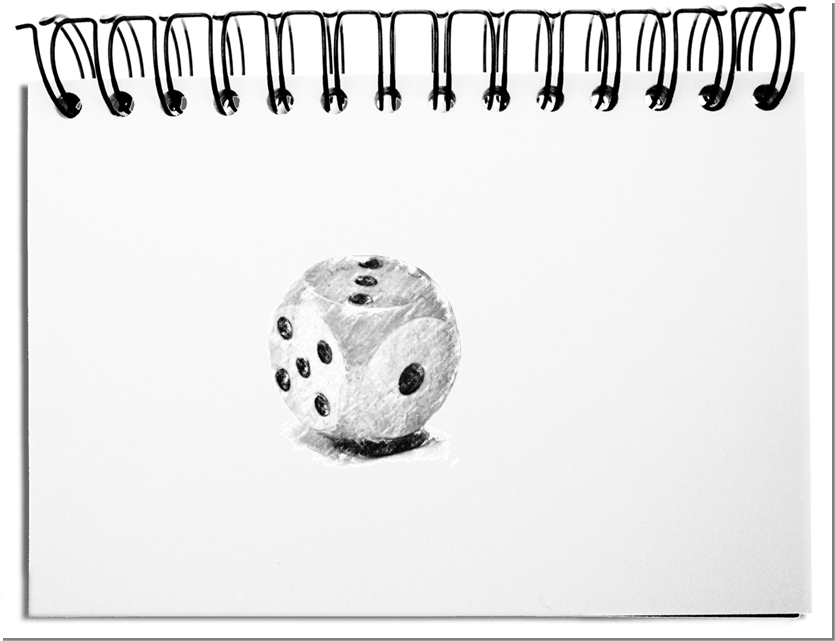Our perception is a personal matter. On the one hand, it differs from one person to another. On the other hand, it is not possible to take part in the inner processes of other people. Even our own subconscious thought processes are not always accessible. Since we do not realize these facts, we assume that everybody sees the world the same way: same point of view, same contents, same focus, and same conclusions. A look at the following picture makes this perceptible. What do you see?
A ringed block? A hand-drawn picture? One dice? The edges of the dice? Or the rounded corners? A one? A black dot on one side? The lowest value of a dice? The best possible roll? The worst? These considerations and those that come now to your mind are all valid viewpoints. The differences are an expression of one’s own personality, simply put: a matter of opinion.
Besides a large number of x-nesses, such as assured-ness, awkward-ness, busi-ness, clear-ness, close-ness, common-ness, definite-ness, fit-ness, free-ness, habitual-ness, open-ness, plain-ness, pure-ness, rare-ness, rude-ness, safe-ness, sage-ness, true-ness, unsuspecting-ness, this time it is about the n-ness – the part-ness and the whole-ness.
- The part-ness
Part-nesses are simply the objects of observation that represent what is shown – lines, points, areas, grey scales, and other known entities. This viewpoint provides detailed descriptions of, ideally, all parts. They can be referenced and counted – as long as the number concept is known. On closer inspection, the parts could be split into further items – in principle without an end. We look at part-ness at the level of detail that seems obvious to us – in our picture maybe the dice or the side of five. The visible details are five black dots and the surface. Each dot has a diameter and we can count them: 1 + 1 + 1 + 1 + 1 = 5. The relationships can be deduced from the part-ness when we consider the dots as a whole-ness (see below). At the same time, we could also consider a single item as a whole-ness, but this would lead to completely different insights (e.g. concerning the production of the cube, the used color). - The whole-ness
To recognize the big picture in current situation depends also on the viewers and their wealth of experience. Some see the dice. The player the gamble? Reader the symbol of luck? Mathematicians the happenstance? The whole-ness is less tangible, as it takes relationships and connections into account that are not recognizable to everyone. The environment of the whole-ness provides additional information – e.g. depending on whether the dice is on a board game or on a casino table. The observers decide based on their experience where the boundaries are defined. In contrast to the details, the whole-ness consists of more than what is seen. There is a difference whether you see five black dots or the second highest value and its meaning. In the following we derive different measures from five points or the five-ness. Thus, the holistic view provides more than a picture of what is seen, and it understands what is at stake. It is self-evident that this understanding differs from one person to another.
Bottom line: The discussion of alternative facts is a matter of part- and whole-ness. While the details are objectively comprehensible, the whole-ness has room for interpretation. This explains the alternative facts. What makes the difference lies in the eye of the beholder – and she-he is always right. The factual description of a detail can easily be clarified by presenting it – exceptions are disturbed perceptions, such as the visual impairment of color-blind people. However, as soon as negotiable, unverifiable elements appear in a detail, it mutates into a whole-ness. Now the wrangle starts. In the end, the part-ness results in the whole-ness, which is more than the sum of its details. Thus, the whole-ness is a matter of opinion and can ultimately be perceived differently.

